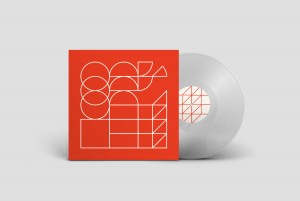
Passepartout Duo is formed of Nicoletta Favari (IT) and Christopher Salvito (IT/US), who since 2015 have been on a continuous journey travelling the world’s corners, engaged in a creative process they term “slow music”.
Having been guests of many notable artist residencies and with live performances in cultural spaces and institutions, their evocative music escapes categorisation. With no fixed abode their musical pilgrimage brought them to Japan first in 2019, which prompted a deep connection to Kankyō Ongaku ‘environmental music’, a genre in which Inoyama Land is often associated with, soundtracking the duo’s first immersive experience.
In 2023 the duo revisited Japan and set out to reconnect in particular with the music of Inoyama Land, performed by Makoto Inoue and Yasushi Yamashita. The highly revered album ‘Danzindan-Pojidon’ (1983) produced by Haruomi Hosono amongst other well publicized and acclaimed reissues (Light in The Attic Records’ Grammy-nominated compilation ‘Kankyō Ongaku’), produced a global resurgence and admiration of the environmental music movement. Nicoletta took the lead to seek out Inoyama Land and in making contact successfully their intrigue and eagerness to meet was warmly reciprocated, and the group scheduled to meet in the form of a spontaneous improvisation session. “We’re deeply concerned with what it means to be a duo, and what it means for people to connect through music.”
Radio Yugawara was recorded in 2023 in Makoto Inoue’s hometown of Yugawara where his family runs a kindergarten, whose space has doubled as a Sunday recording studio. Upon arriving a circle of four tables was set up in the school’s auditorium - the tables were carefully populated with children’s instruments: a full set of handbells, a glockenspiel, a xylophone, recorders, melodicas, and harmonicas. Surrounding the tables were racks hanging all sorts of bells and wind chimes and within this environment each performer set up their own electronic instruments. Dialling into each other, a simple set of playground ‘game rules’ was devised where time was divided into three separate sessions (1) ‘only electronic instruments’, ‘only acoustic’, and ‘a mix of both’, (2) ‘revolving duets’ each taking turns to play through a cycle of ‘four duos’ and (3) ‘anything permitted’, accumulating to more than three hours of material which was then carefully distilled into succinct tracks. The alluring album opener ‘Strange Clouds’ oscillates into view, setting a lush scenery built from a bed of synthesisers and the first glimpse of the chromaplane, the hand-built analogue instrument designed by Passepartout Duo, featuring a touchless interface and endless organic sounds that underpin the album’s 11-track inlets. Percussive pulses act as the heartbeat to ‘Abstract Pets’ before earthy sub-swells open the pathway to glistening glockenspiels and wind chimes. The atmosphere shapeshifts with ‘Simoom’ and ‘Tangerine Fields’ with swirling synth lines and subliminal beats resembling changes in weather patterns. At the centre points the idyllic ‘Observatory’ and ‘Mosaic’ could illuminate the deepest oceans before the hypnotic, arpeggiating synth lines in the otherworldly ‘Xiloteca’ propel the album towards ‘Solivago’, with its gentle lullaby of playful ambience. The reflective closer ‘Axolotl Dreams’ resolves their somewhat chance meeting with elegant pastoral chord strokes and uplifting synth swells, sending final signals upwards into the ether.
Radio Yugawara is a unique one-off transmission from a specific place and point in time, unlikely to ever occur again. The respective duo’s approach can really be described as “tuning in”, a tuning into each other, to themselves, and to the surrounding nature of Yugawara. Like waves that travel off-world, sounds travel through the universe and can be lost forever if we don’t seek them out. In finding a harmonic affinity within their instruments and a spiritual kinship in their interwoven performance, Radio Yugawara at its core is an interpretation of feeling, of close human interaction and the true essence of discovery.
TRACK LISTING
A1. Strange Clouds
A2. Abstract Pets
A3. Simoom
A4. Tangerine Fields
A5. Observatory
B1. Mosaic
B2. King In A Nutshell
B3. Xiloteca
B4. Solivago
B5. Berceuse
B6. Axolotl Dreams
